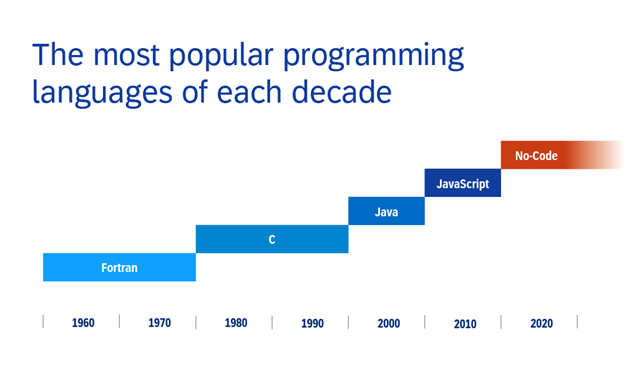 Anthony Cecchini is the President and CTO of Information Technology Partners (ITP), an ERP technology consulting company headquartered now in Virginia, with offices in Herndon. ITP offers comprehensive planning, resource allocation, implementation, upgrade, and training assistance to companies. Anthony has over 20 years of experience in SAP business process analysis and SAP systems integration. ITP is a Silver Partner with SAP, as well as an Appian, Pegasystems, and UIPath Low-code and RPA Value Added Service Partner. You can reach him at [email protected].
Anthony Cecchini is the President and CTO of Information Technology Partners (ITP), an ERP technology consulting company headquartered now in Virginia, with offices in Herndon. ITP offers comprehensive planning, resource allocation, implementation, upgrade, and training assistance to companies. Anthony has over 20 years of experience in SAP business process analysis and SAP systems integration. ITP is a Silver Partner with SAP, as well as an Appian, Pegasystems, and UIPath Low-code and RPA Value Added Service Partner. You can reach him at [email protected].
In 2021, SAP acquired AppGyver Oy, a pioneer in no-code development platforms that enable users with no coding skills to build applications for Web and mobile use. SAP Build Apps evolved from SAP AppGyver and other SAP technologies. SAP Build Apps adds additional application-building capabilities for use in enterprises that address authentication, data integration, and lifecycle management needs. A community edition of SAP AppGyver remains available but does not include the features developed for use in enterprises.
In this post we focus on the AppGyver predecessor to SAP Build Apps, but will do a follow up blog.
As the world moves towards digitization, most people are now using mobile phones, laptops, and other internet-enabled devices for their professional or personal tasks. Therefore, if you want to reach the highest number of people within the shortest possible time inexpensively, you need to move online. If you are thinking of having a digital presence for your business, getting an app rather than a simple website is a prudent idea based on your target clients. Though beneficial, app development is a complex process that requires costly professionals with the right skills.
Fortunately, you do not have to spend so much on app development when you get AppGyver. This professional platform, whose parent company is based in Helsinki, was started in 2010 to allow the no-code development of apps. For some time, SAP had no no-code application platform. Instead, the company used the SAP Business Application Studio. Though powerful, this was more pro-code rather than a simplified low-code solution for app development. There is also SAP Rapid Application Development, a low-code platform with medium complexity. To ease app development for its consumers, SAP acquired AppGyver in February 2021. Here is a table summarizing the three SAP app development platforms.

Historically, there are two categories of application development; front and back end. Back-end app development focuses on data security, access, and storage, while front-end development focuses on the elements that users interact with, including user workflows and interfaces. No-code development will focus on the front-end to ease the building of workflows and user interfaces. With it, you need a skilled developer to manage back-end complexities. On the other hand, low-code development apps have both front and back-end tools. This means you will need no skilled app developer for any aspect of development with them. SAP AppGyver is a no-code platform.
Here is an illustration of the popular programming languages for different decades to help you understand some terms you might come across.

What Does No-Code AppGyver Entail?
In the past, most IT experts did not consider no-code as an equal player in programming but instead a way of building baby apps and enabling small functionalities.You can see that SAP even now allows for a FREE community version.
The new generation of no-code platforms to which AppGyver belongs are types of visual programming. These are full alternatives to writing codes made accessible and visual. With them, you need not write and memorize syntax but use the interface you are creating to achieve all things while seeing the flow of logic in your sequence.
To use an analogy, think of code writing as the laying of bricks when building. You place each of the bricks carefully with enough cement to layer them in between. When highly-skilled, you know how best to design your building. No-code app development allows you to assume that all the bricks will be placed in the best possible way. With it, you can zoom in and out to visualize your design and re-do any brick that has not been properly laid.
The no-code platform is in no way a means of building inferior or baby apps by people with no coding skills. Even those with a lot of experience in coding can use the platform to create even bigger and more sophisticated apps. No-code is the solution for everyone to build superior apps. It can become the de-facto option for creating all your apps by the non-IT and IT teams when done right. No-code does not compromise your vision but allows you to extend how and who can create apps to improve their work
SAP AppGyver comes with unique features that will maximize the benefits you are getting from the platform. Here are these features.
Drag and drop user interface
An extensive component library on SAP AppGyver makes the creation of apps as easy as prototyping. All imaginable style properties are readily available on a menu. You can change your app’s style and preview the results in real-time, upload your customized fonts, add animations and change your adaptive design settings to get your envisioned app. it might feel like you are cheating, but this is the news standard of app creation.
Visual business logic
The many low and no-code development platforms currently available have a limited set of logic. This restricts the number of apps you can build because the formula functions are not as many. Thankfully, this is not the case with SAP AppGyver. The platform has hundreds of logic functions. With them, you can design your apps using a drag-and-drop functionality onto a canvas without learning syntax or writing code. So, if you want to apply some engineering or maths logic, UI logic, or array operations, AppGyver will not limit you.
Deep integrations
Data now forms the core of almost all modern applications and guides most business decisions. This is why SAP AppGyver was built with integration and transformation in mind. It is now simple to add your integrations and access ready-made integrations in the AppGyver marketplace. You can also integrate all your data to ease access to it. SAP AppGyver has a REST integration wizard. With it, you can incorporate all APIs in your applications in minutes and connect with other SAP solutions. A NoSQL development database allows you to connect your app directly through the backend rather than relay data through the SAP AppGyver’s servers. All you do is add your API key and access all these integrations.
Here is a diagram depicting these integrations…

Multidevice support
Nowadays, business processes are handled on multiple devices. The apps you build on SAP APpGyver will work on various devices. You can publish your app to web tablets, TVs, desktops, and mobile phones. The apps have runtimes optimized for all devices to ensure the smoothest experience for all your app users, irrespective of the device they are using.
A universal theme system
The developers at SAP AppGyver have worked tirelessly to ensure your apps look and feel exceptional. In the past, styling apps called for a modification of all individual UI pieces. With the Universal Theme System, you get a major upgrade that allows you to coordinate the styles across your app in a controlled manner. When building an application, you define how you want it to look according to your business design and brand. If you choose to change your theme later, the aspects you have built already will automatically adapt to match your changes in AppGyver.
One of the main objectives of building SAP AppGyver has been to ensure there is no moment when you cannot build the app you need or are unsatisfied with what you can create with a code. Though not easy to build, this no-code platform is truly powerful, and SAP continues to invest in different aspects that will improve user experience. One of the aspects technicians are working on is enhancing extensibility enabling actions like an ability to bring in native mobile capabilities. This will be packaged as reusable primitive elements that form the building blocks of no-code app development.
Another concept that technicians at SAP have been working on in AppGyver is the ability to share and reuse what you have developed. This does not frequently happen in coding since it needs a lot of discipline to abstract code classes and then turn them into usable libraries. However, when building an app, you might get an afterthought to reuse a piece of it later. The reuse element currently available on AppGyver is intuitive to enable a quick path when packaging the apps you have created into larger components.
Unfortunately, the sharing aspect of your app’s components is not yet available and is among the major advancements you can expect. SAP wants to enable the sharing of all creations on the AppGyver ecosystem. Currently, creations are only shared among SAP’s internal team and some trusted partners. Opening the sharing to the marketplace means access for clients to a more extensive library of pre-built features. You can think of this as an open-source repository of features of all sizes and kinds.
Summary
As I stated up front, SAP Build Apps evolved from SAP AppGyver and other SAP technologies. SAP Build Apps adds additional application-building capabilities for use in enterprises that address authentication, data integration, and lifecycle management needs. A community edition of SAP AppGyver remains available but does not include the features developed for use in enterprises.
To learn more about SAP Build Apps, visit this website for a click thru demo and other information.




